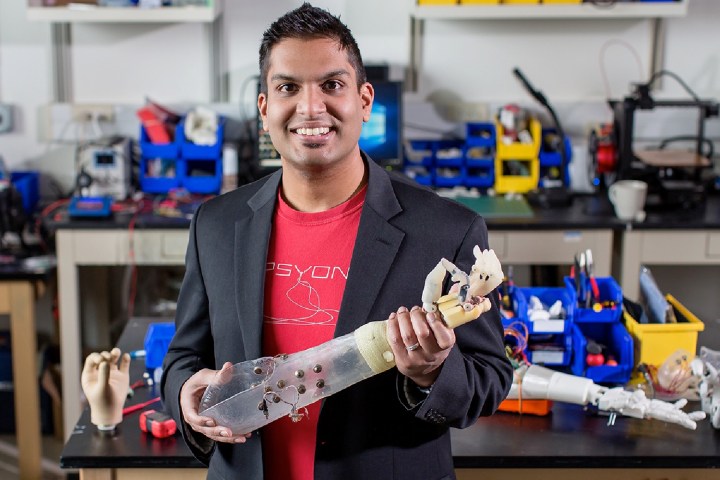
There’s no doubt that modern prostheses are pretty darn amazing. But one thing that most don’t provide users with is a restored sense of touch. That could change, however, thanks to work coming out of the University of Illinois, where engineers have found a way to use electric current to provide consistent sensory feedback to the wearers of prosthetic arms. The results can help make these prosthetic limbs feel less like tools and more like parts of the body.
While some work has been done in this area in the past, using adhesive electrodes to stimulate nerves, this isn’t a good lon- term solution. That’s because electrodes that are connected to the skin can begin to peel off, often resulting in painful shocks for wearers.
“One of the most promising ways to deliver this feedback, without requiring implants or surgery, is to use what’s known as electrotactile feedback, which delivers a tiny amount of current across electrodes on your skin to stimulate sensory nerves,” Aadeel Akhtar, a researcher on the project, told Digital Trends. “The sensation can have many different qualities, such as vibration, tingling, pressure, pulsing, [or] pain. However, the feeling you get is inconsistent. If you start to sweat or the electrodes lose contact, the feeling can either diminish or feel like a shock. We developed an algorithm that relates the intensity of the sensation you feel to the electrical resistance across the electrodes, and we modify the amount and timing of current we send so that the sensation feels the same, even if you sweat or the electrodes lose contact.”
In tests, the device that the researchers developed was shown to be highly durable, even when wearers were carrying out strenuous activities, such as running on an elliptical machine or hammering nails into a board. In the future, they hope to further miniaturize the technology so that it can more easily fit inside (rather than on the outside, as is currently the case) prosthetic limbs.
“In providing this sensory feedback, we need a prosthesis that can detect when it comes into contact with an object and how much pressure it is exerting,” Akhtar said. “With existing prosthetic hardware, there are crude ways of determining whether a finger has come into contact with an object by monitoring the current draw of the motor. But a better approach is to place pressure sensors in the fingers themselves, which tells you more accurately when contact is made and how much pressure is being applied. My company, Psyonic, is developing a prosthetic hand that has sensitive pressure sensors in the fingertips and fingerpads.”
A paper describing the work was recently published in the journal Science Robotics.


